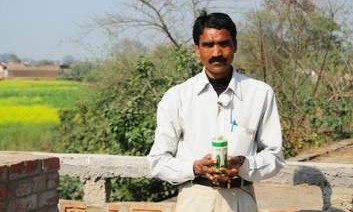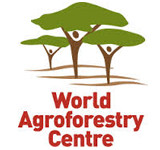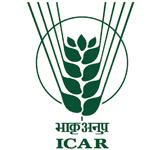
Vigyan Bhavan & Kempinski Ambience
10 - 14 February 2014
Delhi, India
blog

One or two generations ago, smallholder farmers might have grown food crops mainly to feed their own families. But those days are gone. Farmers are looking more and more for cash income.
Like in Bihar, North-Central India: farmers still value the “yield” of a crop, but the “revenue” becomes increasingly important. It is not just because of the “Modern Times”, where electricity bills and school fees are to be paid, and people want to buy a mobile phone, a television or a tractor. No, there is more than that: climate change has chased up the expenses: boreholes, mechanical or electric pumps, hybrid seeds… Each of these has a price tag attached to it. A price tag, farmers are scrambling to pay, but a necessity for any land to bare any crop.
The droughts
A good crowd had gathered in Rambad, a small village in Bihar. Both young and old, from the better-off farmers to the day labourers, all were sitting around us. We were talking about the change in weather, the effects it had on this farmers’ community and ways these people have tried to adapt over time.
When we asked who of the farmers had experimented with new things in the past years, they pointed out a slim man, probably in his late thirties, standing in a bit of a distance. As we all looked at him, he came nearer, stood up straight and held his arms stiff along his body as he said his name, “Vidyabhushan Kumar”, in a loud voice. As if a teacher had just summoned him. We asked Vidyabhushan to sit with us and tell his story.
At first, his story did not differ much from many others we heard in North India: He had a small plot of land, shared with his brothers, where they used to crop wheat and maize. In the past years, the rains have become less predictable: the monsoon comes later, and is shorter. Water has become scarce. The yearly floods bringing in new soil and moisture to the fields are a thing of the past now.
The expenses
“Nowadays, no borehole, no crops”, Vidyabhushan explained, “We need to irrigate our fields, so we have to pump water from the boreholes. But it costs money to dig a borehole. Pump sets are expensive too. They require diesel to run, and need maintenance. All of that costs money, money we need to get from what we produce. No matter what we produce, we need to look at the market value; we look at the revenue it brings.”
In the past years, Vidyabhushan started to crop vegetables after the wheat and maize harvest. “I can get several crops of vegetables before I need to sow wheat again”, he said, “but still that is not enough to provide an income for my family. I needed more.”
Teak, a new source of income.
He took us to the flat roof of his house. In a corner about one hundred small seedlings stood together.
“Teak”, he said, “These are teak seedlings. You see, I calculated: I can buy these at 76 rupees a piece (about US$ 2). The tree needs 10 years to mature, and its timber will bring me 30,000 to 40,000 rupees (US$750 to US$1,000) for each tree. If I plant teak trees on the border of my field, about 6 feet apart, I can plant one hundred teak trees. This will give me a cash revenue of about 300,000 rupees (US$7,500) per year.”
“There is a big teak market abroad, so the resale value is almost guaranteed.” Vidyabhushan smiled, “ But my risks are low. Teak trees don’t need a lot of water, and they don’t conflict with my other crops. The trees can just grow on the edge of my fields. These trees will bring me the cash I need, both for my family, and to counter the increased expenses I have with my other crops. ”
The future: cash or food?
He kneeled down to pick up one of the seedlings. I noticed how careful and softly he handles the tiny plant as he shows it to me. It was as if he was holding his future in his hands.
When we thanked him for the interview, he said “No, don’t go yet, I still want to show you my field, and my crops.” Vidyabhushan smiled as he walked through his vegetable patch: “You see, we can’t eat timber, we can’t eat money. No matter how the market would change, no matter of the revenue teak would bring me, I still need to feed my family. And for that I need to grow food, not just timber!”
But maybe, he is the last generation to still think so. Maybe, as the climate changes, erratic rains, droughts and pests might push farmers’ expenses even higher. Would the next generation of farmers then think of “Revenue only”-crops? What would happen then if they’d stop growing food crops? What would happen if smallholder farmers would switch to non-food crops on a large scale?
Blogpost and photo by Peter Casier/CCAFS (Rome, Italy) – p.casier(at)cgiar.org
Blogpost originally published on the blog from the CGIAR Research Program on Climate Change, Agriculture and Food Security (CCAFS)
|
This is an example entry for our #WCA2014 blog competition. The five blogposts with the most and highest votes will receive a signed copy of the book "Trees for Life". The most popular blogpost will get an iPad.
So, dear reader, YOUR vote is important. Please rate this post, for the originality of the project, the way its story inspired you, and the way the blogpost was written. The more stars, the higher your appreciation:
|






6 People have left comments on this post
I think indeed, there is an inherent danger of farmers switching to cash-generating revenues rather than food crops. The example of “trees” or “food” is one example, but not the only one. Maybe they would prefer biofuel-crops rather than food-crops?
Agroforestry is the way to go: combine the advantages of forestry with food crops and live stock, will combine the best of both worlds!
India had around 1000 plantation companies in 1990’s, many of which related to teak, collected public money and vanished over a shot period . This story appears to be motivated and an attempt of similar nature where Rs. 10 /teak plant cost is quoted to be around Rs. 70/plant in this case. If this was not successful in 1990’s how it could be now. Tree culture is taking place on farm land integrated with agri-crops in many parts of the country especillay with poplar, euca etc with short harvesting cycles but teak being long rotation tree is not idelay suited for small holders.
The income from teak plantations is on the higher side. Secondly, the rotation of this tree in forest lands is about 100 years, how it can mature in 10 years and what will be its quality. The small farmers who get regular income after every four months can not wait for 10 years for the maturity of teak trees. I am not convinced at ll with this article.
Planting Teak tree is just like fixed deposit in bank. After 20-25 years small and marginal farmers could cash that which will help them for their children’s education, etc.
I think this blog clearly explains all about agriculture, groundwater, economics, future and food.
Clear. Nothing more to say